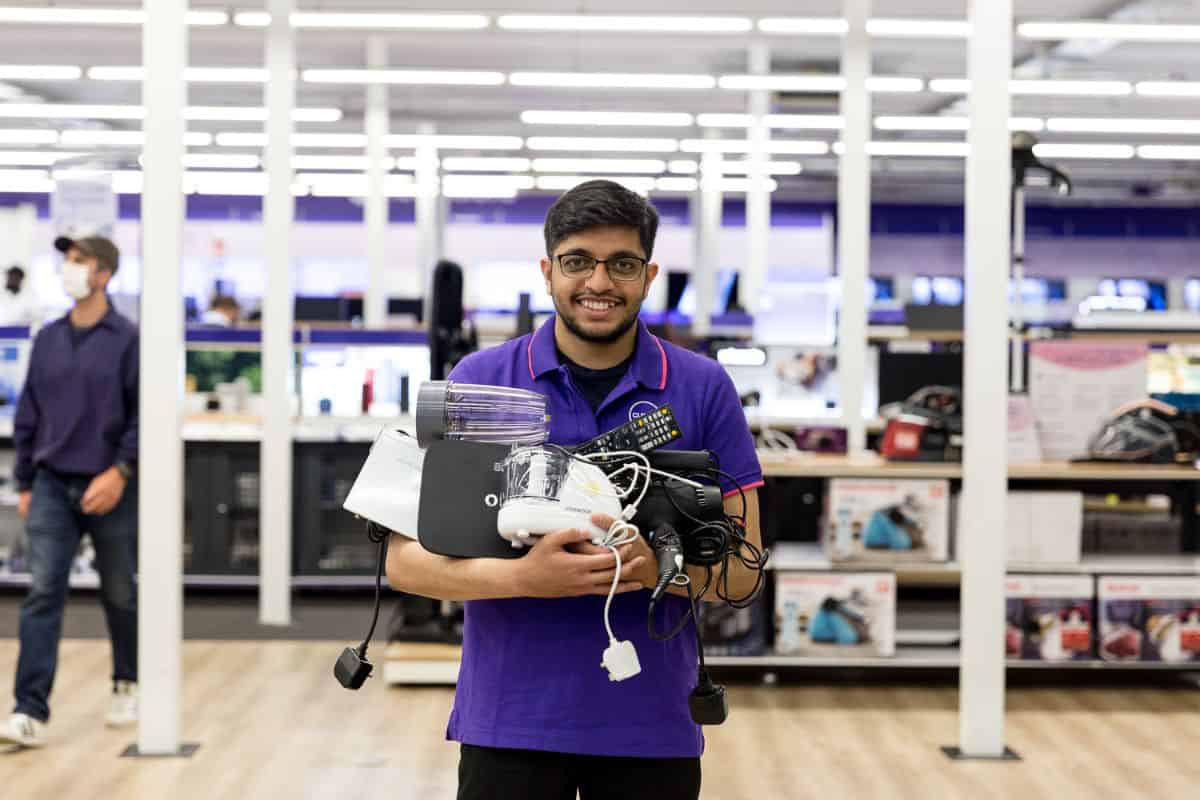Mobile now plays an integral role in all parts of the omnichannel shopping journey. Across in-store and online key changes are being wrought by mobile, writes Paul Skeldon.
1. Social media
Social media has long been a bedrock of m-commerce,with Twitter, Facebook and Instagram having long been primarily used on mobile. The power they wield, carrying recommendations and user-generated marketing content, mustn’t be underestimated. Visual content shared via social media on mobile produces as much as a 111% uplift in conversion and can generate a 180% boost in revenue per visitor to a website, according to a study by Bazaarvoice. Almost 60% of its clients say that customer pictures and video content are now standard in ecommerce, and 81% say that integrating social media and online shopping is a priority for their business. Shoppers themselves are embracing it too. More than two thirds of UK consumers go on to purchase products they discover on retailer’s social media channels, a study of 1,000 consumers aged between 18 and 65 by marketing technology company Curalate found. It also found that 46% spend time thinking about it then buy later online, while 17% will buy in-store. A small but significant 4% make the purchase immediately online after seeing the product. Overall, 39% of consumers were influenced by user-generated content, saying real-life images of people who had previously bought the product would make them more likely to make a purchase. Instagram is particularly lively in this space, tweaking its tools to make it easier for retailers to sell from their Instagram feeds – marking a move towards social media sites also becoming quasi-marketplaces.
2. Distributed retail
Taken together, the rise of marketplaces and the move by Instagram to drive sales from its platform marks a move towards a new paradigm in retailing. The model of distributed retail is something that has long been touted, but increasingly it is becoming something that all retailers need to be aware of. Trials by eBay to let publishers Mashable and Time Inc sell things, via eBay, from their pages marks the start of this move. Combine that with Instagram’s shoppable posts – and in some ways work in the ‘scan, pay, go’ moves in-store, and suddenly the mobile phone is a direct connection to seeing something and buying it. What does this mean for retailers? Suddenly, they are just supplying goods to eBay, Instagram and whoever else gets in on this to make the sale. Moves by Google to turn its search results into sales don’t help either. Sick of passing on searchers to Amazon, Google is looking to make its results shoppable too. Suddenly, this changes very much how people shop and that changes how retailers act. Having a mobile-optimised website isn’t enough, even a ‘traditional’ omnichannel approach isn’t either: now you have to look at a myriad of new platforms to sell through.
3. Voice
There is another new channel to add to the multitude of channels in multichannel retail: voice. A fifth of US shoppers have made a purchase with a voice-controlled personal device, such as a Google Home, Amazon’s Echo and Alexa, or, if they have deep pockets, Apple’s Siri-enabled HomePod this year, according to research by Walker Sand. This number rises to 43% amongst millennials. Investment firm Mizuho, goes further, predicting that revenue generated by the Amazon Echo and Amazon Alexa services could exceed £8.37bn ($11bn) by 2020. The firm also predicts that £3.04bn ($4bn) of that would come from the sales of the Echo device itself (including the Tap and Dot), while the other £5.33bn ($7bn) would come from all the commerce transactions derived from those devices to Amazon.com.
This has serious implications for retail. Not only are shoppers wanting these devices in their home to help them do all manner of things from play music to finding recipes to shopping, but they are also starting to expect retail apps and retail websites – especially on mobile – to also be voice-controlled. Some of the forward-thinking retailers are already starting to exploit these home devices, but for the majority who are still struggling to deliver a good mobile user experience, it is simply seen as a bridge too far. But they ignore voice at their peril. Voice is calling, and retailers need to answer.
4. Get personal, not discount
Mobile and voice commerce both offers the chance to create a deep and personal connection with retailers and drive sales by forming a relationship with them. However, marketers still aren’t getting personalisation right – with most not matching what they do with the personalisation consumers want and most not delivering the level of customer service they crave, new research has revealed. According to Epsilon’s new report The Power of me: The impact of personalisation on marketing performance, there is a disconnect between marketers and consumers, with brands failing to understand what their customers want from personalisation. The personalised experiences most wanted by consumers are customisation and service, with a third of consumers (32%) wanting brands to suit something exactly to them and their needs, and another third (32%) considering service, a company knowing their likes and dislikes, as the most important aspect of personalisation. However, this does not correlate with the personalised experiences most commonly offered by brands. Brands aren’t focusing on customisation and service but are instead providing consumers with discounts and rewards programmes (31%) or simple recommendations based on previous purchases (22%). In fact, both of these factors are considered far less important by consumers (16% and 8% respectively). Time to get personal, time to use as many platforms as you can and time to wake up the changing face of retail.
This is a sneak peak of the IRUK Top500 Mobile & Crosschannel report, due to be published in September 2018, when it will be available on IRUK Top500 research page. Click here for more.








